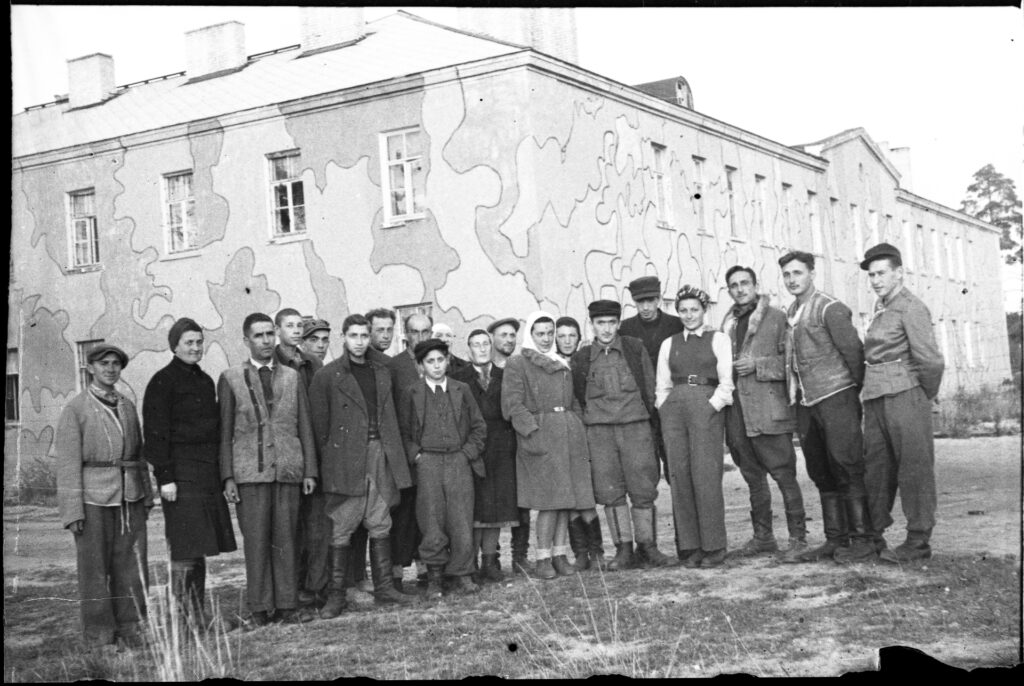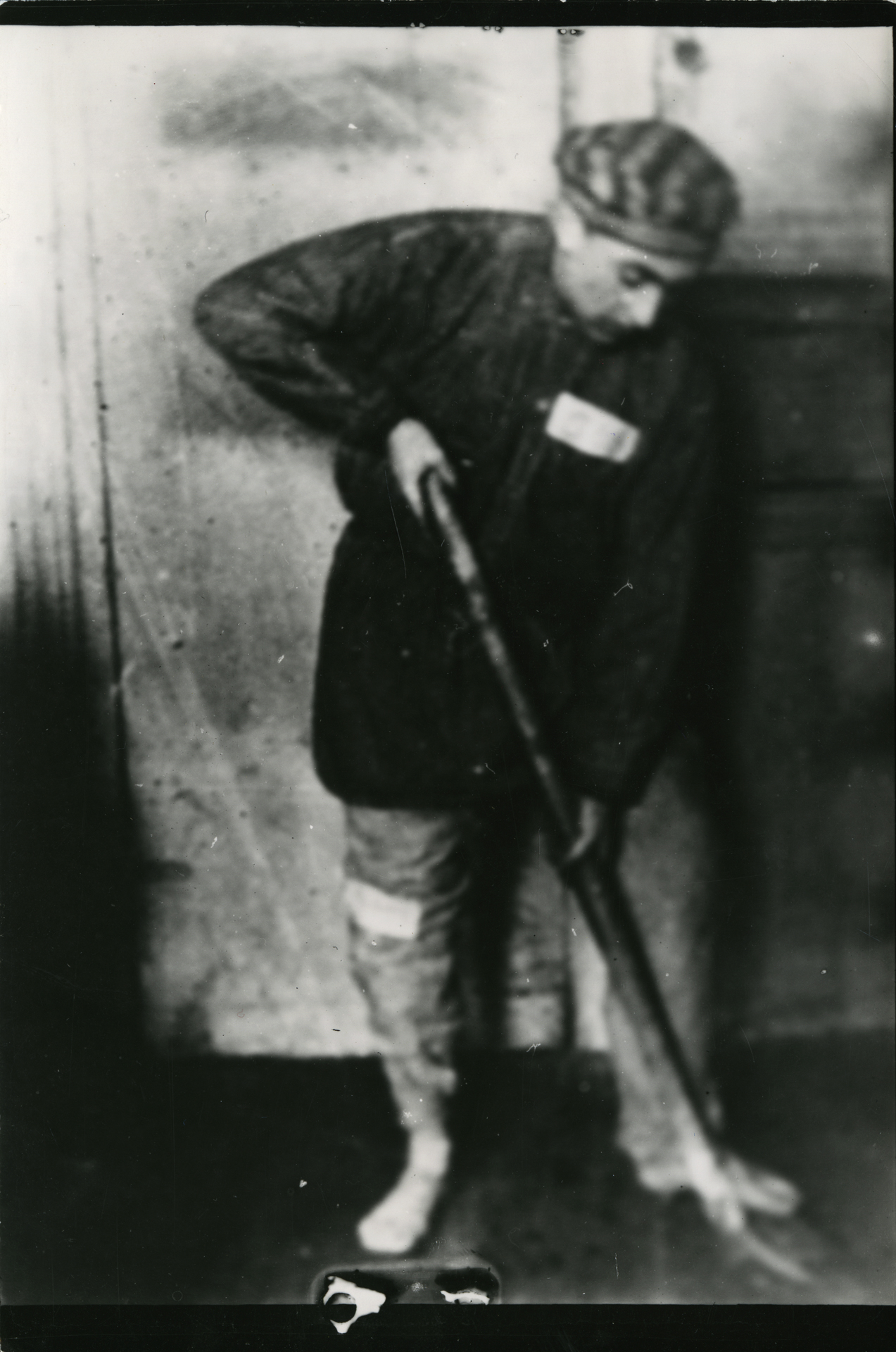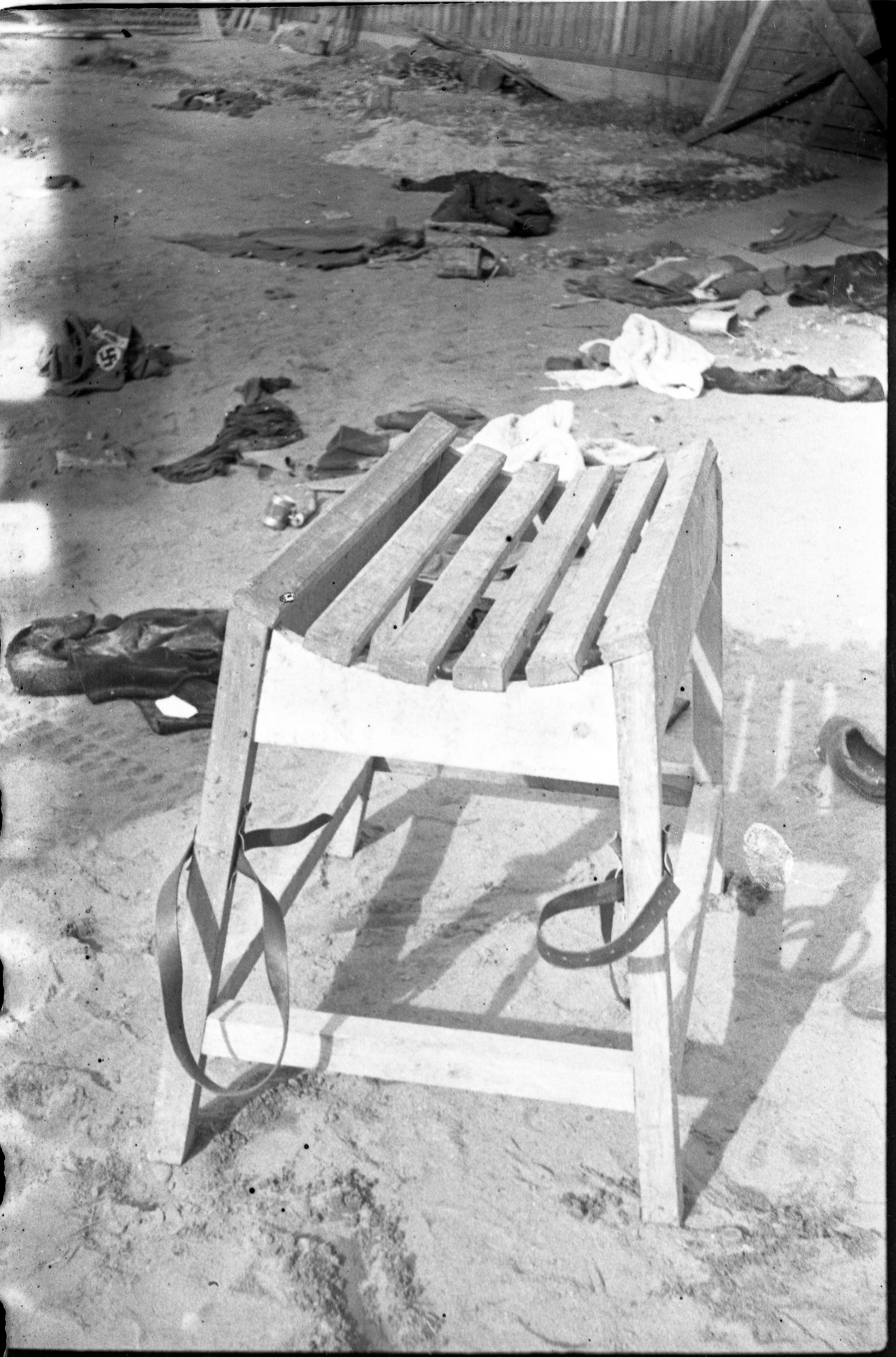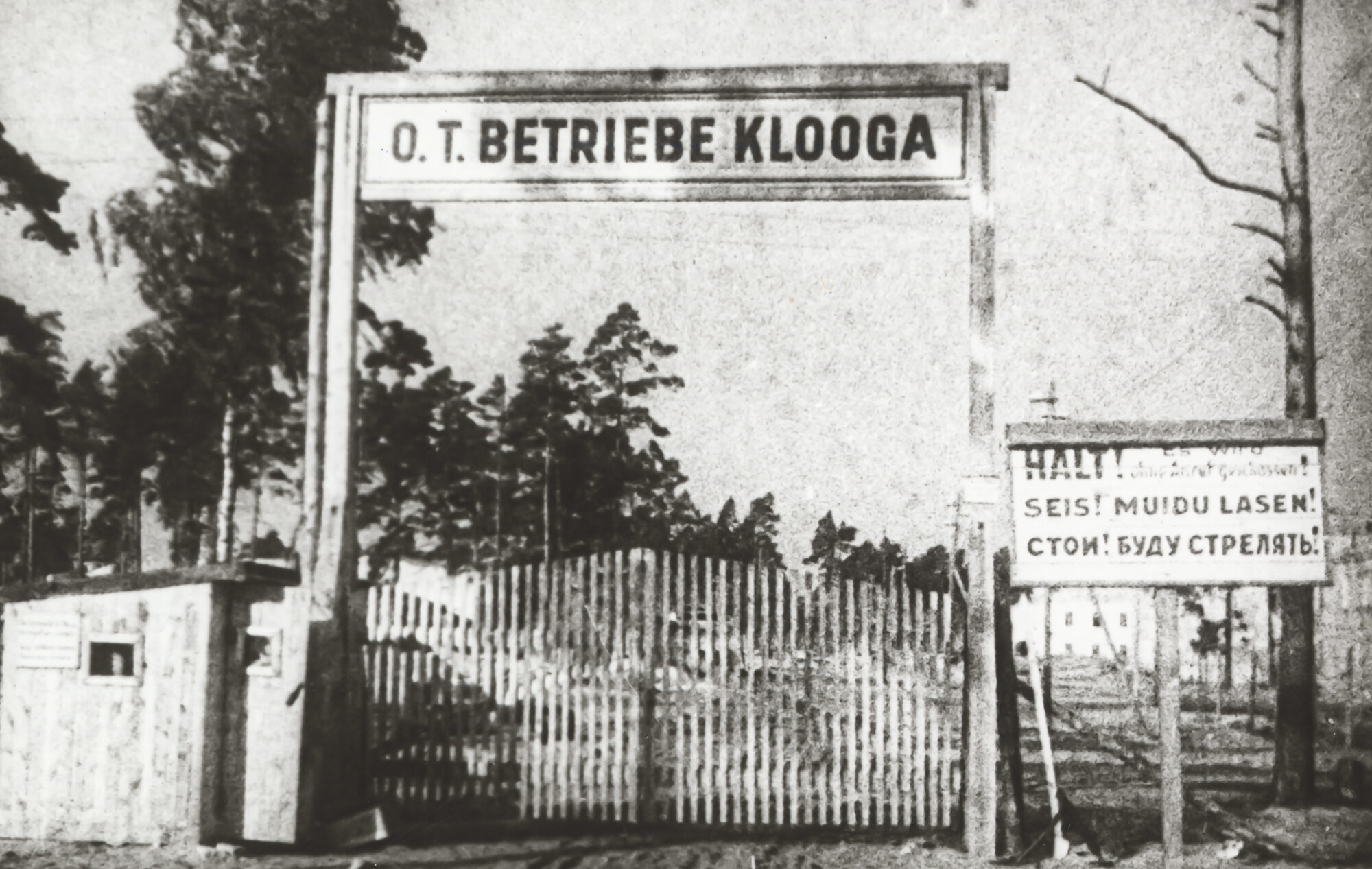The first prisoners were brought to Klooga between September and November of 1943. The camp was originally intended for approximately 2,000 prisoners and throughout its operation the number of inmates remained relatively stable at 1,800 to 2,100. The relocation of prisoners from one camp to another within the Vaivara camp system was constant. In total close to 3,000 Jews may have passed through the Klooga camp. Most of them came from the ghettoes of Vilnius and Kaunas, and to a lesser extent from Latvia. More women than men passed through the camp.
Unlike other sub-camps in the Vaivara network, the Klooga camp had brick buildings with separate quarters for men and women, and there was running water. The inmates had their own hospital with doctors, who were themselves prisoners. This made living conditions, especially during the winter months, slightly better than in the other camps, where prisoners lived in temporary barracks. Therefore, word spread among the other camps, whose inmates worked in the oil shale mines and industry, that Klooga was a relatively “good” camp.
On the camp grounds was a sawmill, a concrete factory and a number of various workshops. About 200 metres from the workshops stood a separate barracks for POWs, surrounded by barbed wire. The inmates were under the command of the Organisation “Todt”. They worked in the sawmill and produced concrete submarine signal mines for the navy.
For prisoners, the day began at 5 am, when they lined up in the square outside the women’s block. The working day began at 6 am and lasted until 6 pm, with a one-hour lunch break. The Jews were formed into groups of 100. Each group was assigned a foreman by the Germans.
The supply of food was poor. Breakfast consisted of coffee; during the day they were allowed 350g of bread and German margarine; for lunch they had one litre of groat soup and once a week they were given 25g sugar or marmalade. The 12-hour workday was more than the under-nourished prisoners could bear. In some cases they worked alongside wage-earning Estonians, which provided contact with the local population. Due to this, it is known that on many occasions, according to their means and despite the difficult wartime conditions, locals tried to help the Jews with food and by making contact with friends and relatives of the prisoners who were in other camps



